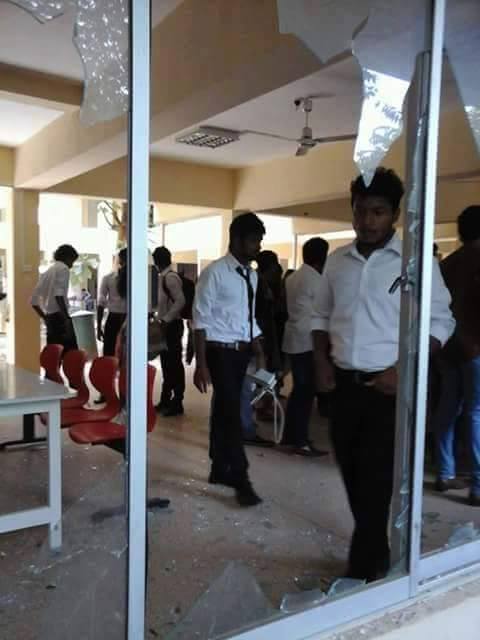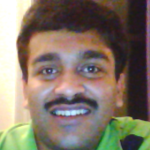A Brief Colonial History Of Ceylon(SriLanka)
Sri Lanka: One Island Two Nations
A Brief Colonial History Of Ceylon(SriLanka)
Sri Lanka: One Island Two Nations
(Full Story)
Search This Blog
Back to 500BC.
==========================
Thiranjala Weerasinghe sj.- One Island Two Nations
?????????????????????????????????????????????????Friday, July 29, 2016
Clash At Jaffna University: Conversations On Culture & History – Part II

By Mahendran Thiruvarangan –July 28, 2016
Challenging Chauvinism: Alternative Accounts of Political Activism at Jaffna University
 In the aftermath of the clash at the University of Jaffna,
as a way of justifying the Tamil students’ refusal to have Kandyan
Dance at the opening procession, some nationalist commentators are busy
crafting distorted accounts of the history of political activism within
the campus that favors Tamil nationalism and the LTTE over other
ideologies and actors. The history of the University of Jaffna is as
complex as the history of any other place. It was driven by various
forces that held divergent political views. When it was started in the
1970s, the University housed students from different ethnic communities.
It was a center where notable Leftist and progressive intellectuals
from various communities and various parts of the island such as
Kailasapathy, Indrapala, A. J. Canagaratna, Silan Kadirgamar, M.
Nithyanandan, Nirmala Rajasingam, Dayapala Thiranagama, Harsha
Gunawaradena, M. A. Nuhman and Sitralega Maunaguru taught. The attacks
on the hill country Tamil students in 1976 by a group of students with
political links to the Tamil United Liberation Front show that Tamil
chauvinism had its presence at the University even in its early days
(for an extended commentary on this incident, read Rajan Hoole’s latest
book Palmyrah Fallen). A notable aspect of the University of
Jaffna in the 1970s was that it had arguably the most progressive
Sinhala Department in the country at the time. Sucharitha Gamlath and
Dharmasena Pathirajah were on the faculty of this department. When
ethnic violence erupted in the South in 1977, the teachers, Tamil
students and Tamil families in the neighborhood gave protection to the
Sinhala students at the University of Jaffna and took every necessary
step to send them safely to their homes in the South. But a section of
the Sinhala students, upon reaching the Southern parts of the country,
deliberately misinformed the public that they had been assaulted by the
Tamils in Jaffna. Giving prominence to the untruthful statements made by
the students, the government of that time and Southern media claimed
that the ethnic violence against the Tamils in the South had started in
retaliation to the attacks on the Sinhala students at the University of
Jaffna by the Tamils in Jaffna. Thereafter, the government ceased to
send Sinhala students to Jaffna University.
In the aftermath of the clash at the University of Jaffna,
as a way of justifying the Tamil students’ refusal to have Kandyan
Dance at the opening procession, some nationalist commentators are busy
crafting distorted accounts of the history of political activism within
the campus that favors Tamil nationalism and the LTTE over other
ideologies and actors. The history of the University of Jaffna is as
complex as the history of any other place. It was driven by various
forces that held divergent political views. When it was started in the
1970s, the University housed students from different ethnic communities.
It was a center where notable Leftist and progressive intellectuals
from various communities and various parts of the island such as
Kailasapathy, Indrapala, A. J. Canagaratna, Silan Kadirgamar, M.
Nithyanandan, Nirmala Rajasingam, Dayapala Thiranagama, Harsha
Gunawaradena, M. A. Nuhman and Sitralega Maunaguru taught. The attacks
on the hill country Tamil students in 1976 by a group of students with
political links to the Tamil United Liberation Front show that Tamil
chauvinism had its presence at the University even in its early days
(for an extended commentary on this incident, read Rajan Hoole’s latest
book Palmyrah Fallen). A notable aspect of the University of
Jaffna in the 1970s was that it had arguably the most progressive
Sinhala Department in the country at the time. Sucharitha Gamlath and
Dharmasena Pathirajah were on the faculty of this department. When
ethnic violence erupted in the South in 1977, the teachers, Tamil
students and Tamil families in the neighborhood gave protection to the
Sinhala students at the University of Jaffna and took every necessary
step to send them safely to their homes in the South. But a section of
the Sinhala students, upon reaching the Southern parts of the country,
deliberately misinformed the public that they had been assaulted by the
Tamils in Jaffna. Giving prominence to the untruthful statements made by
the students, the government of that time and Southern media claimed
that the ethnic violence against the Tamils in the South had started in
retaliation to the attacks on the Sinhala students at the University of
Jaffna by the Tamils in Jaffna. Thereafter, the government ceased to
send Sinhala students to Jaffna University.
In the months following the ethnic violence of 1977, with the rise in
hostilities against the Tamils by the UNP government, many Leftist
intellectuals from the Tamil community started to align themselves with
the Tamil national cause and even contribute to the armed struggle. Thus
Tamil nationalist politics at the University of Jaffna began to gather
momentum in the late 1970s and early 1980s. Yet, in the mid-1980s, with
the onset of internecine warfare among the different Tamil militant
groups, the University became a place where dissenting academics and
students courageously expressed their criticism of the armed struggle
and the narrow-minded Tamil nationalist politics that the militants
espoused. In 1988, taking into account the volatile political situation
in the North-East after the Indo-Lanka Accord, 50 academics attached to
the University of Jaffna issued a statement emphasizing the importance
of the Tamils’ participation in the first election for the North-East
Provincial Council. When the violence around the second JVP insurgency
led to the creation of collectives called University Teachers for Human
Rights at the universities in the South, a similar collective was formed
at the University of Jaffna in 1988. Documenting the trials and
tribulations of the people in the North under the Indian Peace Keeping
Forces, Tamil militants, and the Sri Lankan state during this period,
four leading members of this collective the late Rajani Thiranagama,
Rajan Hoole, K. Sritharan and Daya Somasundaram brought out The Broken Palmyrah in 1989.

